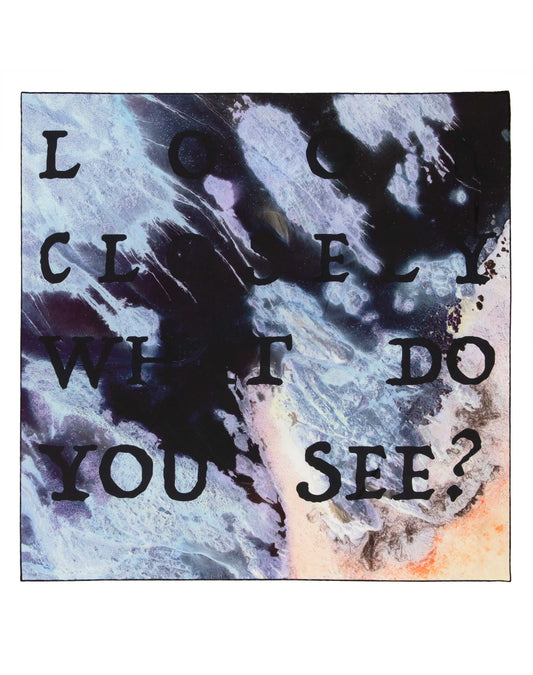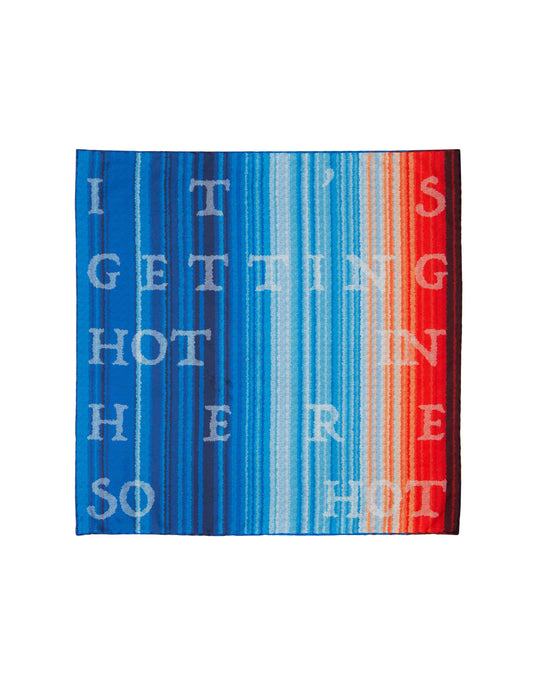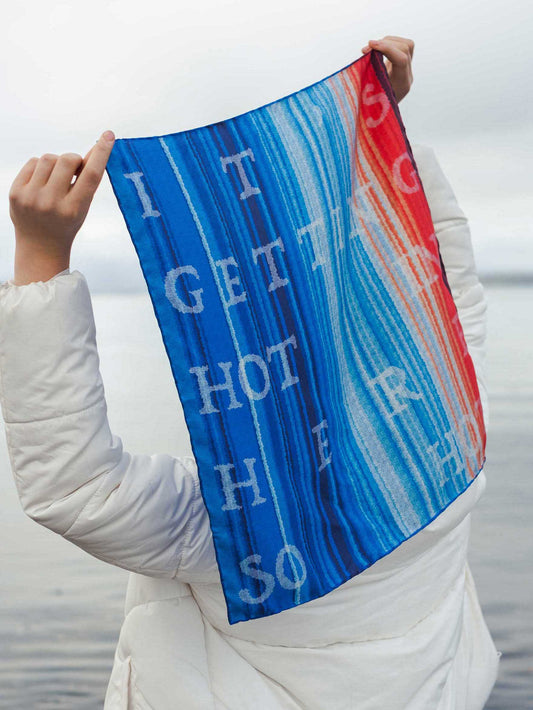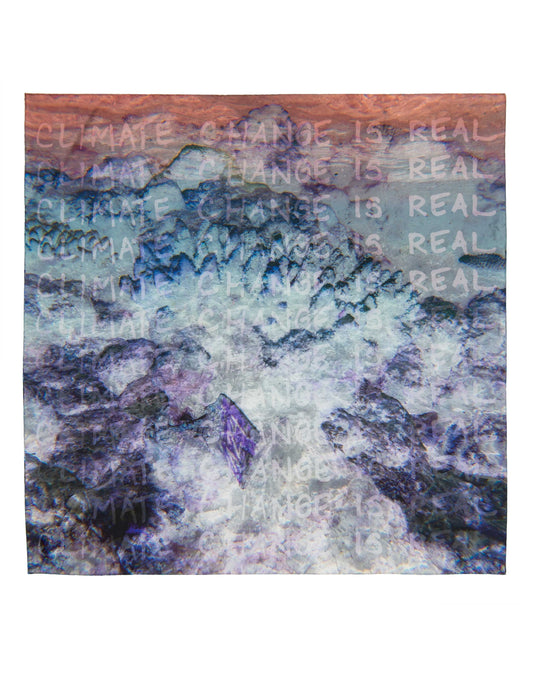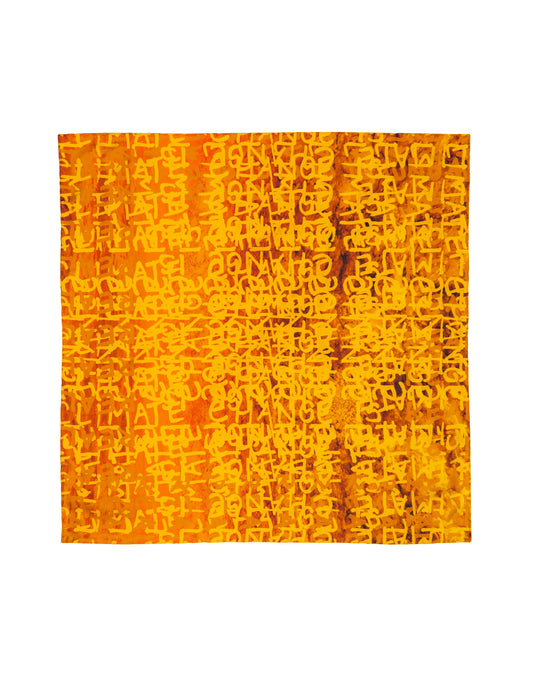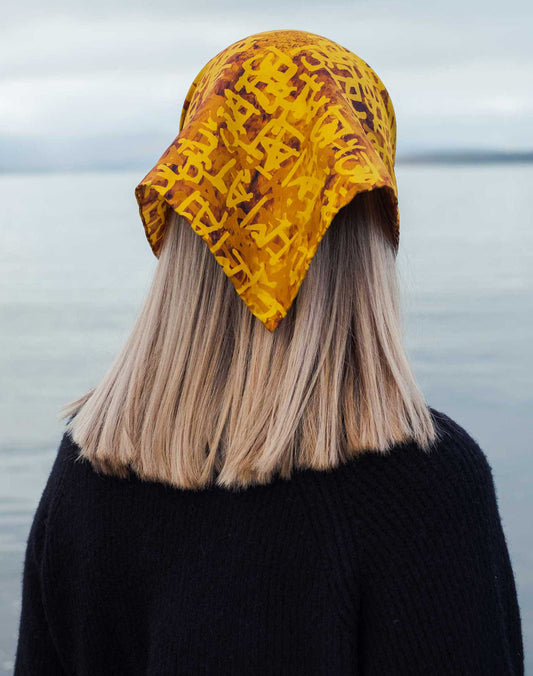Let us take you on an incredible journey. One that starts 200 metres below the surface of the ocean and extends to several thousand metres;, to one of the most distant and remote places on the planet. Seldom explored by man and inhospitable to all but the most tenacious of organisms.
We would like to take you to the mountains of the deep. Seamounts are found thousands of metres below the surface of the ocean and are home to a huge variety of incredible organisms. Because of their inaccessibility, rarity and remote location, these incredible underwater worlds have been hidden to all but a very few lucky individuals.
Until now.
Do you love fashion, the ocean, and mountains? If so, this is undoubtedly the collection of your dreams!
We have delved into the depths of the ocean to bring you a vibrant and beautiful collection of designs inspired by the organisms which inhabit the mountains under the sea.
Read on to find out more about seamounts and the story of the science behind our new collection:
- What are seamounts? Where are they, and how do you get there?
- What types of organisms live on a seamount? AND
- What if Ben Nevis isn’t the highest mountain in the UK, after all?
We were delighted to team up with scientists Professor Bhavani Narayanaswamy and Dr Natalia Serpetti from the Scottish Association for Marine Science to produce this collection. The collaboration furthers our mission to share the hidden beauty of the ocean with our wonderful customers, empowering them to wear their values and spread the word so that these fascinating and delicate ecosystems can be preserved for generations to come.
What are seamounts, and what is the seamount collection?
Seamounts are underwater mountains. Like mountains on land, they tower above the immediate surrounding area. In contrast to mountains on land, which can be quite barren, devoid of flora and fauna in comparison to the valleys below, seamounts are often covered in the most abundant and incredibly beautiful animals.
This is the science story of the Seamount Collection. We interviewed project partners and deep-sea researchers Dr Natalia Serpetti and Professor Bhavani Narayanaswamy from Scottish Association for Marine Science to share with you in the video below the amazing research that is helping us to further understand these vulnerable and stunning marine environments. The more we work with marine scientists, the more we are in awe of our planet, and it's such a joy to share this unseen world with you.
To be classified as a seamount, these undersea mountains must reach at least 1,000 metres in height, but some of the examples studied have reached heights of 3,000 or even 4,000 metres these depths whose exploration even now pushes the boundaries of science and technology and leads to new discoveries. Many seamounts are located in very remote places far from land, so it can take many days even to reach the sites by ship.
The seamount collection brings you some of the stunning images from the exploration of seamounts in the form of vibrant and striking designs, making use of starkly contrasting colour schemes to convey the beauty and mystery of the deep sea and intricacy of these hidden underwater worlds. The deep sea is dark, cold but teeming with the most extraordinary life forms.
The result is a collection of artful, wearable science-inspired fashion pieces. Crafted from the finest quality materials, our pieces convey the beauty of unseen worlds to new audiences, spreading an important message about the future of our planet, whilst also being part of the solution.
What - and where - are the organisms that feature in the seamount collection designs?
Some of the organisms found on seamounts are quite large, whilst others are tiny and can be found in amongst the sediment and coral rubble. Bhavani and Natalia’s team explored the deep sea in the northeast Atlantic and the southwest Indian ocean, looking at macrofauna ranging in size from smaller than 0.5 centimetres to about 1 centimetre in length meaning that they could only be viewed and studied effectively with the aid of a microscope.
The shapes and the features of seamounts can vary, just like the mountains we see on land - some are very rocky, have steep slopes, and these can lead to the upwelling of deep sea currents. These areas are often colonized by deep sea corals and sponges. Some seamounts have shallower slopes, and these are commonly covered by sediments - here we have smaller animals that are shrimp or worm like (e.g.polychaetes) living in the substrate.
The sheer variety of animals such as corals and sponges that can be seen on seamounts with a remotely operated vehicle (ROVs) is impressive in itself, but there are many more organisms that can only be seen with a microscope. These are incredible, diverse underwater landscapes just teeming with life.
In 2011, Bhavani and Natalia were part of a team exploring seamounts in the southwest Indian Ocean for six weeks, sampling across five different seamounts along the ridge. They discovered amongst other things, a new species of crustacean isopod called Arcturididae (family), Arcturides (genus) on three of the seamounts.
To date, this family of Arcturididae contains only one genus: Arcturides. However, new information indicates that it may contain at least two other species.Two of them had been described before, but were previously thought to be found only in Africa, and a third that was completely new. The DNA of these species is now undergoing further analysis to see how they are related to each other and to other species within the same order. This will help establish how they have evolved.
As you can see, we are sharing the news of a new marine species through fashion before it has been published in science. This is a world first!
What is particularly unique and special about these newly-discovered organisms?
The organisms live among hard corals!
Jessica : I’m seeing that they have this kind of polyp – are they mimicking coral polyps or.. what is unique about them, are they symbionts?
Natalia: Ah yeah you’re definitely right Jessica they are mimicking, they are living in corals, in hard corals so the other two species, what I call their cousins, uh they have the smooth surface. Another species is called acuminatus, and they have a long spine. This one (shown in the scarf), is the third species and from the spine, you can see there is a kind of a flower of a polyp, and this one was a commensal species living on a large colony in the deep sea.
Why do these organisms matter?
This incredible, remote and mysterious underwater ecosystems might seem a world away from our life on land. But everything we do on land is connected to the marine environment.
When litter is thrown on the ground, it may well end up in the ocean. The person who threw the litter will probably never see that happen, but it does, and the impact is felt much more widely than we can possibly imagine. It’s not just the shallow coastal waters affected, but as Bhavani and Natalia’s research has found in these remote deep-sea environments there is troubling evidence of just how widespread the effects of plastic pollution have become.,as well as discovering incredible new organisms and complex ecosystems, they have found.
Incredibly, rubbish and microplastics have been found on seamounts - many thousands of miles from land, you might think these landscapes would be immune from the effects of our actions, but sadly not.
What is concerning about this, is that due to the remote location of seamounts, it is only relatively recently - perhaps in the last 20-30 years - that it’s been possible to explore them up close. There are still places in the ocean environment that have not yet been discovered , and the effects of pollution and overfishing could in fact be destroying populations or species that have not even been seen before, or devastating ecosystems we know nothing about.
Apart from fisheries, deep sea mining is a concern. Some seamounts are rich in precious metals and minerals, such as cobalt. Extraction of these minerals can destroy the delicate habitat of the organisms living there. Once damaged, they cannot be properly restored.
Where does Crùbag come in?
We all have a duty to protect the ocean environment, and those of us who can - like Bhavani and Natalia - have an important role in studying these deep-sea realms and communicating the findings to gain and share more knowledge about how to protect them.
Crùbag is a bridge between marine science and the public, blending science and art, because through our designs we can show creatures, patterns and organisms that normally only scientists get to see. Our pieces provide a way to communicate to the general public the beauty of the deep sea, in order to help more people enjoy, appreciate and work to protect these important environments.
Crubag’s incredible customers can help by sharing stories of the science behind the creations they choose to wear. It is our mission to build and engage a global community capable of spreading ocean literacy far and wide. We need to do this before itis too late for the incredible organisms which feature in our collections. Also, our promise is to give back at least 10% of our profits towards funding advances in marine science, like the discoveries made about seamounts which inspired this new collection.
Scientists like Bhavani and Natalia work with Crùbag to help make their discoveries available and appealing to a wider audience, so that the general public, in particular the generation of tomorrow, can see the wonders that scientists are fortunate enough to experience. This is what motivated Crùbag’s founder, Jessica Giannotti, to start the company in the first place.
The research mentioned above was a long way from Crùbag’s base on the shores of Loch Etive - are there any seamounts to be found closer to home?
Bhavani and Natalia revealed that there are indeed seamounts to be found closer to Scotland. Out in the northeast Atlantic, a number of seamounts have been found. Just a day or so from Crubag’s headquarters near Oban, these towering mountains sit below the ocean surface and offer an essential habitat to a wide variety of species.
One surprising fact is that if you take seamounts into account, Ben Nevis (1,345m) is not the tallest mountain in the UK! It’s actually the (much less famous!) Anton Dohrn, at 1,800m high. This impressive seamount lies west of St Kilda in the Rockall Trough.
Our Conchas Blue and Conchas Red scarves in the Seamount Collection actually features the bivalve Thyasira species, an organism found at the base of Anton Dohrn Seamount, at an incredible depth of 2,200m. It’s amazing to think even at that depth; we’re finding such small and intricate organisms.
What makes someone like Bhavani and Natalia choose to be a deep sea researcher?
For Natalia, her love of the sea came from her family, who visited the seaside whenever they could. When she was a child, she loved to dive in the Mediterranean (much warmer than our home here in Scotland!), and was fascinated by the tiny shells she found on the seabed. Her father likes to joke that she’s now being paid to do the job she was doing at the age of three!
What a wonderful way to put your passion into practice! We hope that Bhavani and Natalia’s important work, shared through Crùbag’s designs and pieces, just might help to inspire the next generation of deep sea explorers.
Professor Bhavani Narayanaswamy wanted us to leave you with this important final thought, which we think sums up perfectly why we use images from science in our designs, and why we feel it’s so important to share these ocean worlds with you, our wonderful customers:
“Just because the deep sea is out of sight doesn’t mean it should be out of mind. It is just as important that we protect this vulnerable environment as much as we are looking to try and protect our coastlines.”
Image, from right to left: Prof Bhavani Narayanaswamy, Scottish Association for Marine Science; Dr Natalia Serpetti, National Institute of Oceanography and Experimental Geophysics - OGS, Trieste, Italy and Jessica Giannotti, founder of Crùbag. You can explore the complete Seamount Collection here.



